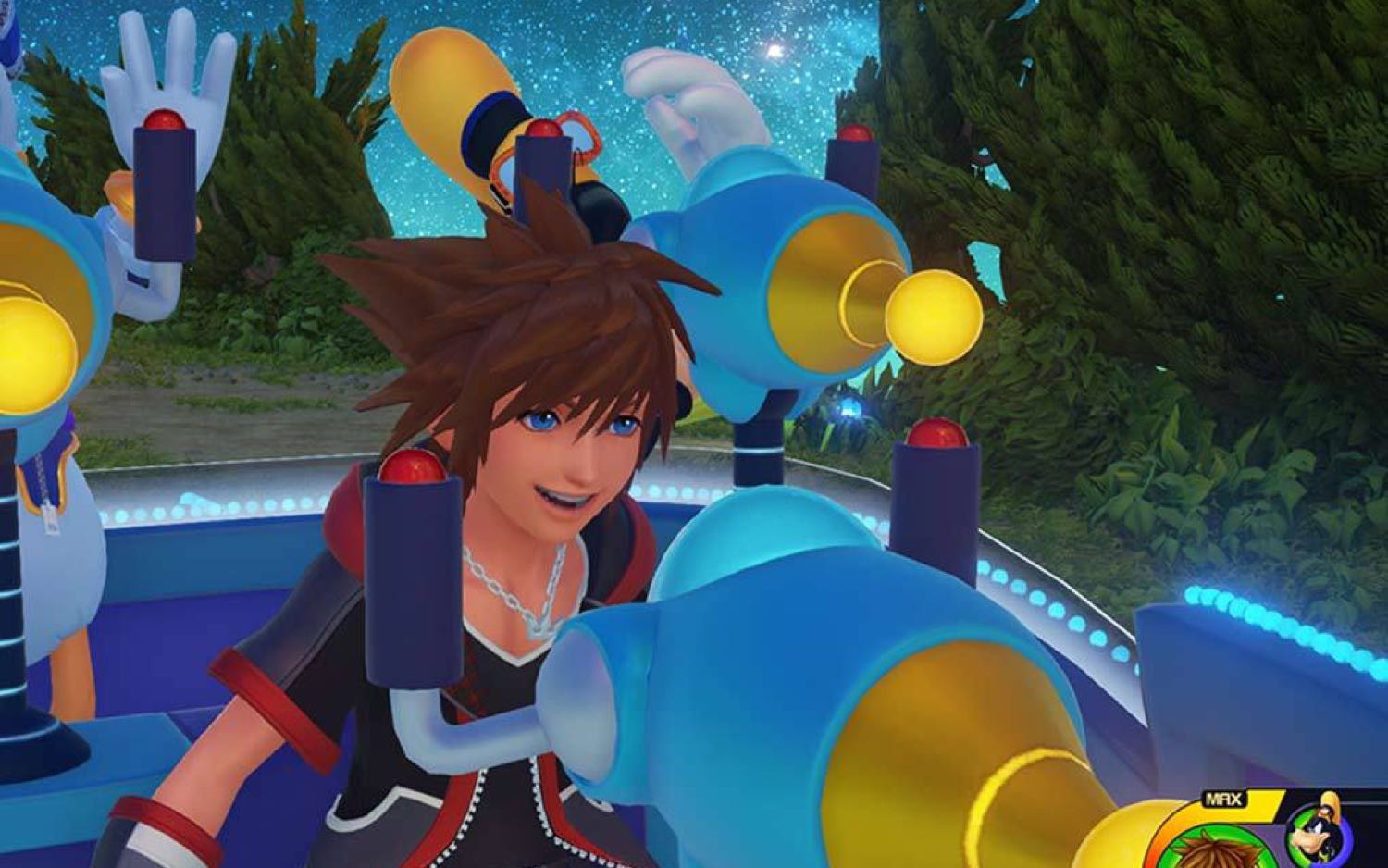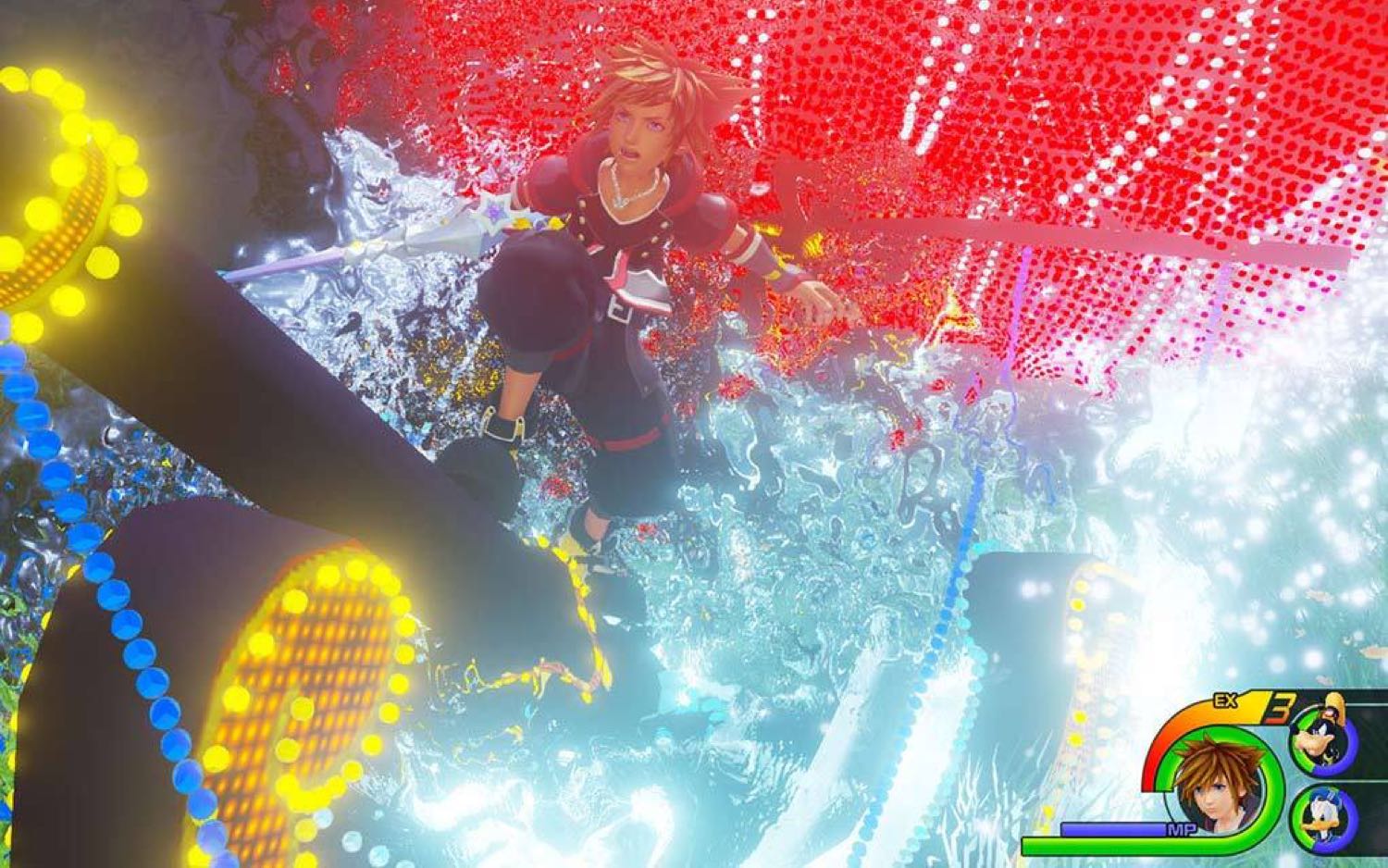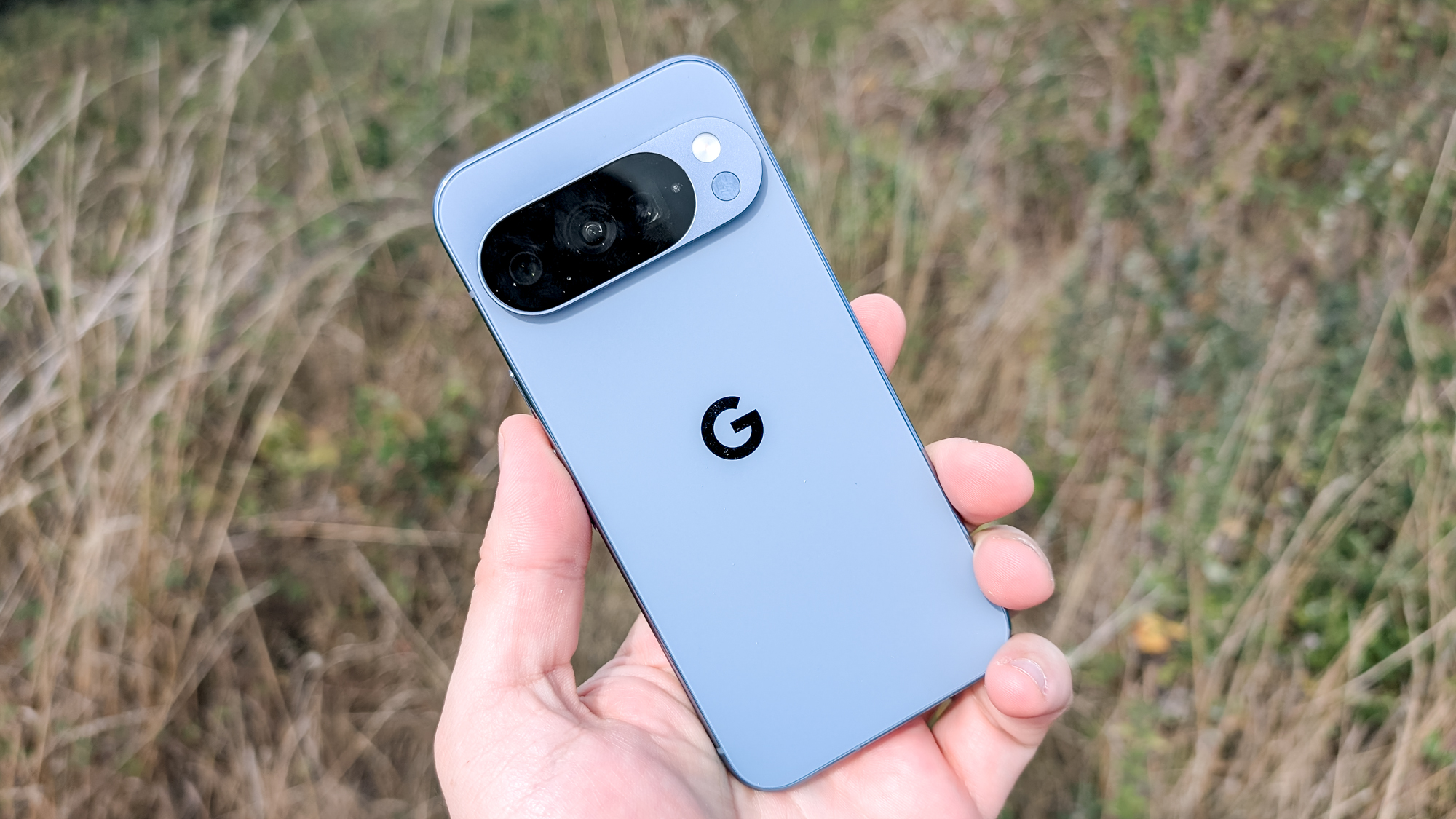What Is Kingdom Hearts? Gaming’s Most Convoluted Crossover, Explained
I regret to inform you that I still have basically no idea what's going on in Kingdom Hearts.
Look. Kingdom Hearts III is coming out this week, and you're going to play it. You know it. I know it. Mickey Mouse knows it. And that's OK, because Kingdom Hearts has a novel concept, imaginative gameplay and a passionate fan base.

But it also has the most nonsensical, arbitrary ongoing plot in gaming, excepting perhaps the Metal Gear Solid series. This truth stings, because on its surface, nothing should be simpler than "Disney meets Final Fantasy, aimed at tweens." And yet. And yet.
Here at Tom's Guide, our primary goal is to help the reader, and sometimes that means that we've got to take a hit ourselves. I spent a good chunk of last year catching up on the myriad spinoffs and tie-ins to everyone's favorite mashup series, partially so that you wouldn't have to, but partially so that I would have some idea of what was going on when Kingdom Hearts III eventually came out.
I regret to inform you that I still have basically no idea what's going on in Kingdom Hearts. There's something about Leonard Nimoy turning people evil, and digital data copies of the main characters, and a protagonist who is actually three guys (and one girl) all stacked on top of each other in a trench coat, or something.
But damn it all, I'm going to do my level best to put this all together into some kind of primer. If the last Kingdom Hearts game you played was KHII (14 years ago — half a lifetime for the franchise's first generation of fans), here's what you need to know — maybe? I hope? — for Kingdom Hearts III.
What is Kingdom Hearts III?
OK, let me field an easy one to start! Kingdom Hearts III is an action/RPG from Square Enix that mashes together Disney worlds and Final Fantasy characters. Playing as world-hopping teenager Sora, along with Donald Duck and Goofy as party members, you'll explore the worlds of beloved films like Toy Story, Tangled and Pirates of the Caribbean in an original(ish) story. The game will launch on Jan. 29 for PS4 and Xbox One, and it will cost $60.
So it's the third game in the series?
Get instant access to breaking news, the hottest reviews, great deals and helpful tips.
It's … I mean, technically … well, from a certain point of …
Let's just break this one down. The short answer is no. Now, get ready for the long answer.
Kingdom Hearts debuted in 2002 for the PS2. This was the first game in the series.
The next game was Kingdom Hearts: Chain of Memories, which came out for the Game Boy Advance in 2004.
Then, Kingdom Hearts II on the PS2 came out in 2005. You may note that this was actually the third game in the series.
In 2008, an episodic mobile game called Kingdom Hearts: Coded came out in Japan. You may be tempted to write this one off, but no, there are actually quite a few plot-relevant things that happen in it. Let's call this the fourth game. (Western audiences can indeed play it as the slightly upgraded Re:Coded for the Nintendo DS, which came out in 2010.)

Kingdom Hearts: 358/2 Days (yes, someone really approved this subtitle) for the DS came out in 2009, making it, technically, the fifth game in the series. But in terms of the timeline, it's actually the third game. We'll get to that, believe me.
Then there was Kingdom Hearts: Birth by Sleep for the PSP in 2010. While this game takes place chronologically before any other title in the series, by release numbers, it's the sixth game.
In 2012, we got Kingdom Hearts: Dream Drop Distance for the 3DS, because this was in that era where every 3DS game had to have some kind of cutesy subtitle referencing the hardware. To its credit, this seventh entry in the series actually moved the story ahead a bit.
Then there's Kingdom Hearts χ, which came out in 2013 in Japan. It started off as a free-to-play web browser game and later came to mobile systems, where it was called Kingdom Hearts Unchained χ. Just to make matters even more confusing, Square Enix eventually renamed the game Kingdom hearts Union χ[Cross] — and just for the record, no, that's not the letter "X," it's the Greek letter "chi." For simplicity's sake, let's count them all as one game and say that it's the eighth installment.
Finally, there's Kingdom Hearts 0.2: Birth By Sleep — A Fragmentary Passage. And if your brain is still able to process these increasingly ridiculous names, then my hat's off to you. This short, stand-alone adventure came as part of the Kingdom Hearts HD 2.8 Final Chapter Prologue compilation for PS4, and it's arguable whether it counts as a full game. But it has content you won't get anywhere else, so let's call it the ninth game.
Not counting various remakes and re-releases (of which there have been approximately ten thousand), that makes Kingdom Hearts III the tenth game in the series. Easy.
What the heck is going on in the story?
Oh, guys, I don't know. I've played eight out of the nine games, and I'm still not entirely sure.

Kingdom Hearts is all about a happy-go-lucky boy named Sora, his broody friend Riku and their platonic(?) crush Kairi. The three tweens live on the Destiny Islands (with a bunch of chibi Final Fantasy characters, for some reason), but dream of greater adventures. That adventure comes in the form of the Heartless: evil creatures who travel from world to world. Sora flees from the Heartless, along with Donald Duck and Goofy, who are searching for their friend, the missing King Mickey Mouse. After traversing multiple Disney worlds with the help of a weapon called a Keyblade, they find that an evil researcher named Ansem was behind the threat. The friends defeat him, only to find that their journey must continue in a new series of worlds.
(It is worth noting at this juncture that Kingdom Hearts was the last game in the series to have a sensible plot.)
Sora's quest takes a detour when he stumbles on a mysterious castle in Kingdom Hearts: Chain of Memories. There, he meets the enigmatic Organization XIII: a company of black-robed evildoers who have a profound interest in learning more about the Heartless. As Sora takes on Marluxia, one of their ranking officers, Riku must explore the castle from another perspective and grapple with his own inner darkness. (He briefly turned evil in the last game. May not have mentioned that? Anyway.) By the time the game is done, Sora and Riku have torn their way through half of Organization XIII's roster.
Kingdom Hearts II is where things start getting really weird. Sora, Donald and Goofy travel to more and more Disney worlds, encountering more and more incongruous Final Fantasy characters along the way. They learn that Organization XIII characters are Nobodies: the soulless reflections of Heartless. And they're being led by Xemnas: Ansem's Nobody. The remaining Organization XIII members want their hearts back, including Roxas, who came into existence when Sora briefly became a Heartless in the last game. Sora and Riku finally find Mickey, then team up to take down Xemnas — which should end things, but doesn't. Sora also lets Roxas live on in his own heart.
Appropriately for a cellphone, Kingdom Hearts: Coded takes place in a digitized world where data re-creations of Sora and Riku have to defeat Heartless in a simulation. I'm going to level with you: The game was important just because it set up what was going to happen in Dream Drop Distance, but I don't recall anything else vital in the game's story.

Kingdom Hearts: 358/2 Days is all about Roxas and Organization XIII before they were all, you know, brutally murdered for the terrible crime of wanting to not live as soulless husks. Apparently, there was a fourteenth member of Organization XIII: a girl named Xion, who started to influence Roxas and make him not quite evil enough to hang with the rest of the crew. Xion eventually loses it and forces Roxas to confront her, but Roxas takes her own essence into himself, which means that Sora now has three personalities inside him.
In theory, Kingdom Hearts: Birth by Sleep explains a lot of series backstory, since it's a prequel — but in practice, it adds a lot more tangles to the plot knot. The plot takes place 10 years before the first game and follows three friends: Terra, Aqua and Ventus, who are all training to be Keyblade masters. The black-robed Master Xehanort (the late Leonard Nimoy, in one of his last major roles) claims to take a special interest in Terra's progress, but really just wants to steal Terra's younger, stronger body for himself. Xehanort not only commandeers Terra's body but also disguises himself as Ansem, usurping the position from a gentle researcher. Also, Aqua saves Ventus by implanting his spirit into a young boy named Sora (four personalities) and then gets trapped in a shadowy otherworld herself.
Kingdom Hearts: Dream Drop Distance takes place just before Kingdom Hearts III. Yen Sid, the wizard from Fantasia, challenges Sora and Riku to become Keyblade masters by exploring Disney worlds that have been "sleeping," and therefore have been untouched by the Heartless. But new foes called the Unversed eventually drive the protagonists to discover something troubling. Despite being defeated twice, Xehanort/Ansem can now travel through time and recruit alternate versions of himself from the time stream. He's using these younger selves — along with some Organization XIII members who are now alive again for some convoluted reason — to start a new Organization, which will kick off some kind of apocalyptic, villainous plan. Sora and Riku stop Xehanort for the time being, and Riku becomes a Keyblade master.
Kingdom Hearts χ takes place long before the rest of the series and focuses on a user-created character fighting in the oft-mentioned Keyblade Wars. But there are about 800 quests in the game, and you have to put up with all the standard free-to-play nonsense in order to experience them all, so good luck getting through them all. Basically, Mickey Mouse is good; Disney villains are evil. What else is new?
I didn't play A Fragmentary Passage, because I am not spending $50 on an HD upgrade of a game I've already played, just for an extra 3 hours of content.
MORE: Kingdom Hearts 3: Everything We Know So Far
So, there you go. That's Kingdom Hearts in all of its world-hopping, time-traveling, childhood-retconning glory. The broad strokes of the plot are easy enough to follow, but it's not clear whether Kingdom Hearts III is going to go for approachable simplicity or agonizing minutiae.
Holy backstory, Batman!
I know, right?
Honestly, I set out to write this primer with my tongue firmly in my cheek, but I wound up at a place of genuine frustration. That's because Kingdom Hearts has a ridiculously convoluted narrative, twisted into place by more than a decade of questionable spinoffs — and there is absolutely no reason why this had to be the case.
"Disney meets Final Fantasy" is such an engaging pitch, it almost writes itself. We can grant Square Enix a new protagonist or two in order to provide an audience perspective, and maybe even a new villain to tie together all the disparate Disney threads. (Even though Maleficent would have been a perfectly good Big Bad, in this writer's opinion.)
But now, we have more than two dozen original characters, who make the Disney and Final Fantasy cast members feel totally superfluous. We have time travel, we have pocket dimensions, we have up to three different "versions" of the same characters, we have spontaneous resurrections, we have characters inhabiting each other's heads like Russian nesting dolls. And to get there took 17 years — enough time to grow a literal new generation of Kingdom Hearts fans. When will enough be enough?
Well, Kingdom Hearts III is supposed to wrap up the current plot arc, so we'll see whether it can possibly tie all of these disparate threads together in a satisfying way. At the very least, we should get some fun gameplay and enjoyable cameos out of it.
Credit: Square-Enix/Disney

Marshall Honorof was a senior editor for Tom's Guide, overseeing the site's coverage of gaming hardware and software. He comes from a science writing background, having studied paleomammalogy, biological anthropology, and the history of science and technology. After hours, you can find him practicing taekwondo or doing deep dives on classic sci-fi.
